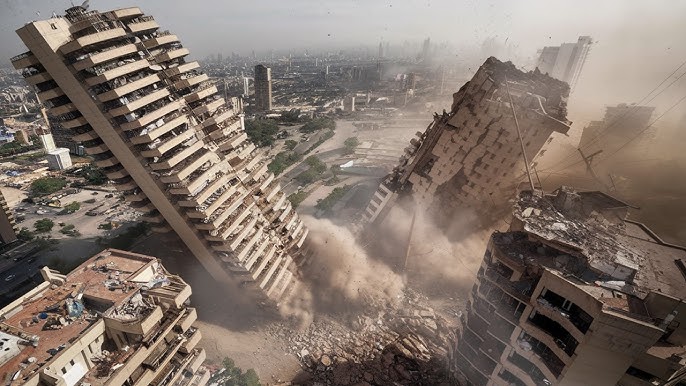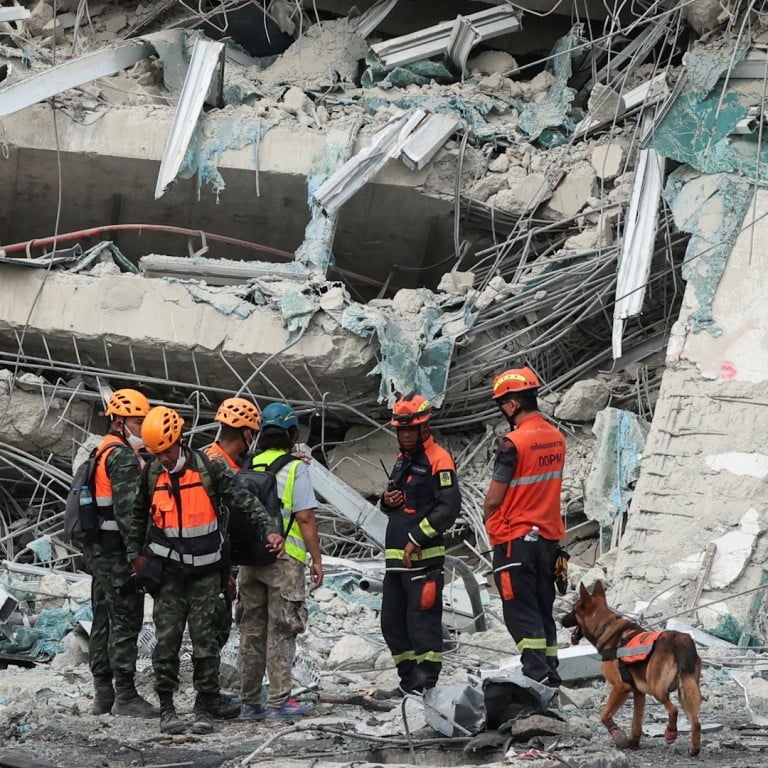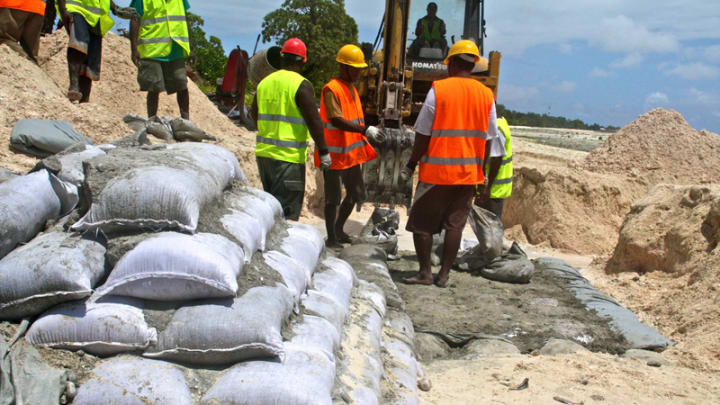On what began as a seemingly ordinary morning in Colombia’s bustling capital, life was suddenly upended by one of the most powerful earthquakes the nation has faced in recent years. The city of Bogotá, normally alive with commuters, street vendors, and morning routines, was jolted into chaos when a magnitude 6.3 earthquake struck, sending shockwaves through the heart of the country.

The Moment of Impact
At precisely 10:47 AM local time, tremors rippled beneath central Colombia. The epicenter of the quake was recorded near Villavicencio, a city located roughly 80 kilometers southeast of Bogotá. Despite its distance from the capital, the force was strong enough to rattle Colombia’s largest city, where sidewalks cracked, windows shattered, and high-rise buildings swayed unnervingly.
Residents described the earth’s violent movement as though the ground itself was trying to throw everything off balance. Within moments, Bogotá was plunged into scenes of confusion, fear, and destruction.

Collapsing Structures in the Capital
The most dramatic damage occurred in Bogotá’s downtown area, where a towering apartment block partially collapsed. The building, once a symbol of security for dozens of families, now leaned precariously against its neighbor, its once-sturdy walls fractured and exposed. From above, the structure resembled a crumpled domino, with jagged concrete, broken glass, and twisted steel jutting out at dangerous angles.
Balconies dangled over the streets like broken teeth, while debris covered the sidewalks below. Emergency crews arriving on the scene reported faint cries for help from the lower levels of the building, signaling the presence of survivors trapped within the rubble. Rescue operations began immediately, with teams using shovels, heavy equipment, and even their bare hands to pull people to safety.

Widespread Impact Beyond Bogotá
While the capital bore the brunt of the destruction, the earthquake’s reach extended far beyond. Tremors were reported in Medellín, Cali, and numerous smaller towns across the region. Many areas experienced power outages, with communications temporarily disrupted as mobile networks struggled to handle the surge in calls.
Colombian authorities confirmed several fatalities in the immediate aftermath, along with dozens of reported injuries. In neighborhoods throughout Bogotá and surrounding regions, collapsed structures and damaged infrastructure left many families displaced and unsure of where to turn. Officials cautioned that the casualty figures were likely to rise as search-and-rescue efforts continued through the day.

Emergency Response in Action
The Colombian government mobilized emergency services swiftly, deploying firefighters, police, and military personnel to the most severely affected zones. Search-and-rescue dogs were brought in to detect survivors beneath the rubble, while medical teams set up triage centers in open areas, such as schoolyards and parking lots, to treat the injured.
Authorities issued urgent warnings for residents to avoid entering damaged buildings due to the risk of aftershocks. Temporary shelters were established across Bogotá to provide safe refuge for families who could not return to their homes. Relief organizations began distributing food, water, blankets, and medical supplies to those in need.
Social media quickly filled with striking images and videos: dust clouds rising above collapsed structures, sirens echoing across the city, and citizens comforting one another in parks and plazas. In moments of fear, Colombia’s resilience and solidarity began to shine through.

Personal Accounts of Survival
Stories from survivors captured the emotional weight of the disaster. Residents recalled the moment everything shifted—the sudden roar beneath their feet, the trembling walls, and the terrifying collapse of once-secure buildings. One Bogotá resident described the sensation as though the ground had turned into waves, throwing people off balance.
Families recounted running barefoot into the streets, clutching children and loved ones. Elderly residents were guided to safety by neighbors, while volunteers organized spontaneous efforts to check on vulnerable households. Amid the dust and confusion, Colombia’s spirit of community emerged as people reached out to support one another in their time of greatest need.

International and Regional Reactions
The severity of the quake quickly drew international attention. Governments from across Latin America expressed solidarity with Colombia, offering assistance if needed. Humanitarian organizations also signaled readiness to provide emergency aid, reinforcing the importance of global cooperation in times of natural disaster.
Meanwhile, regional seismic monitoring centers warned that aftershocks were likely to continue in the coming days, urging caution for residents returning to damaged areas. Engineers were dispatched to assess structural stability in Bogotá’s high-rises, while urban planners highlighted the need for improved earthquake-resistant construction standards in the country’s growing cities.

Bogotá’s Resilience in the Face of Disaster
Though the destruction has left scars on Colombia’s capital, the resilience of its people has been evident from the earliest moments after the quake. Rescue teams have continued to pull survivors from collapsed structures, and families separated during the chaos are being reunited. Citizens have volunteered to donate blood, assist with rescue efforts, and provide shelter for displaced neighbors.
The earthquake has served as a stark reminder of Colombia’s vulnerability to seismic activity. The region sits within a complex network of tectonic plates, making it prone to earthquakes of varying magnitudes. While modern technology has improved early detection and emergency preparedness, the suddenness of this event underscores how little warning residents often have before disaster strikes.
Looking Ahead
Authorities remain focused on stabilizing the situation in Bogotá and surrounding areas. Restoring essential services such as electricity, clean water, and communication networks is a top priority. Engineers continue to inspect buildings for structural integrity, while rescue teams search tirelessly for those who may still be trapped beneath debris.
For many Colombians, the road to recovery will be long. Families who lost homes face the daunting task of rebuilding, while those who lost loved ones must navigate grief amid the ongoing uncertainty. Yet amid the devastation, Colombia’s spirit remains unbroken. The unity displayed in Bogotá’s streets reflects the country’s determination to overcome this tragedy.
Conclusion
The 6.3-magnitude earthquake that struck Colombia has left a lasting impact on its capital and beyond. From collapsing buildings to widespread fear and uncertainty, the disaster has tested the resilience of Bogotá’s people. But even in the face of loss and destruction, the strength of Colombia’s communities and the swift mobilization of emergency responders offer hope.
As the rescue efforts continue and recovery begins, the nation stands united. Colombia, though shaken, remains unbowed—a testament to the endurance of its people and their will to rebuild, heal, and carry forward.




